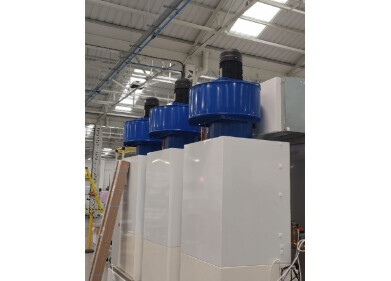Laboratory Products
How the Adaptability of Liposomes Assists in Overcoming Today’s Drug Delivery Challenges
Aug 15 2017
A challenge during modern drug development is overcoming low bioavailability. Recent investigations indicate liposomes demonstrable potential to be used as a drug carrier to solve this issue.
The study of liposome-drug encapsulation is an expanding field due to their versatility and ease of manipulation in terms of their physiochemical and biophysical properties. Conventional liposomes (representation A) are composed of a lipid bi-layer and liquid core, allowing them to encapsulate hydrophilic and hydrophobic drugs. An example hydrophobic drug is Paclitaxel: a chemotherapeutic agent used to treat cancers.
Figure 1: Different types of liposomal delivery systems [2]
These types of liposomes are relatively stable at physiological pH, though their contents release under acidic conditions. This has potential in providing targeted anti-cancer therapy, through the lower pH values observed in tumour tissue.
Many formulations of pH-sensitive liposomes are unstable in the blood; overcome by adding poly-ethylene glycol lipid derivatives to the formulation, to produce PEGylated liposomes/ stealth liposomes (representation B).
Ligand-targeted liposomes (illustration C) offer potential for targeted drug delivery, by selectively expressing specific ligands at the site of disease.
Theranostic liposome systems (representation D) encapsulate a nanosized agent, such as iron-oxide and gold nanoparticles, which is utilised for imaging. Theranostic liposomes can be PEGylated and ligand-targeted to produce a comprehensive diagnostic and therapeutic drug delivery system.
Overall, adaptability is the key advantage associated with liposomes for drug delivery.
In preparation of the desired liposomes, high pressure homogenisation (HPH), is often performed on pre-formed liposomes to produce small unilamellar vesicles.
HPH also has the capability to load liposomes with drugs, allowing for a streamlined process.
Avestin’s range of high pressure homogenisers allow for the combination of homogenisation and extrusion which can reduce the number of cycles required to achieve a desired size distribution, making the process more efficient.
Read the full article by Biopharma Group here
Digital Edition
Lab Asia 31.2 April 2024
April 2024
In This Edition Chromatography Articles - Approaches to troubleshooting an SPE method for the analysis of oligonucleotides (pt i) - High-precision liquid flow processes demand full fluidic c...
View all digital editions
Events
Apr 22 2024 Marrakech, Morroco
Making Pharmaceuticals Exhibition & Conference
Apr 23 2024 Coventry, UK
Apr 23 2024 Kintex, South Korea
Apr 23 2024 Seoul, South Korea
Apr 24 2024 Jakarta, Indonesia

 AMD1.6.17 - Boom2.jpg)
.jpg)


.jpg)













